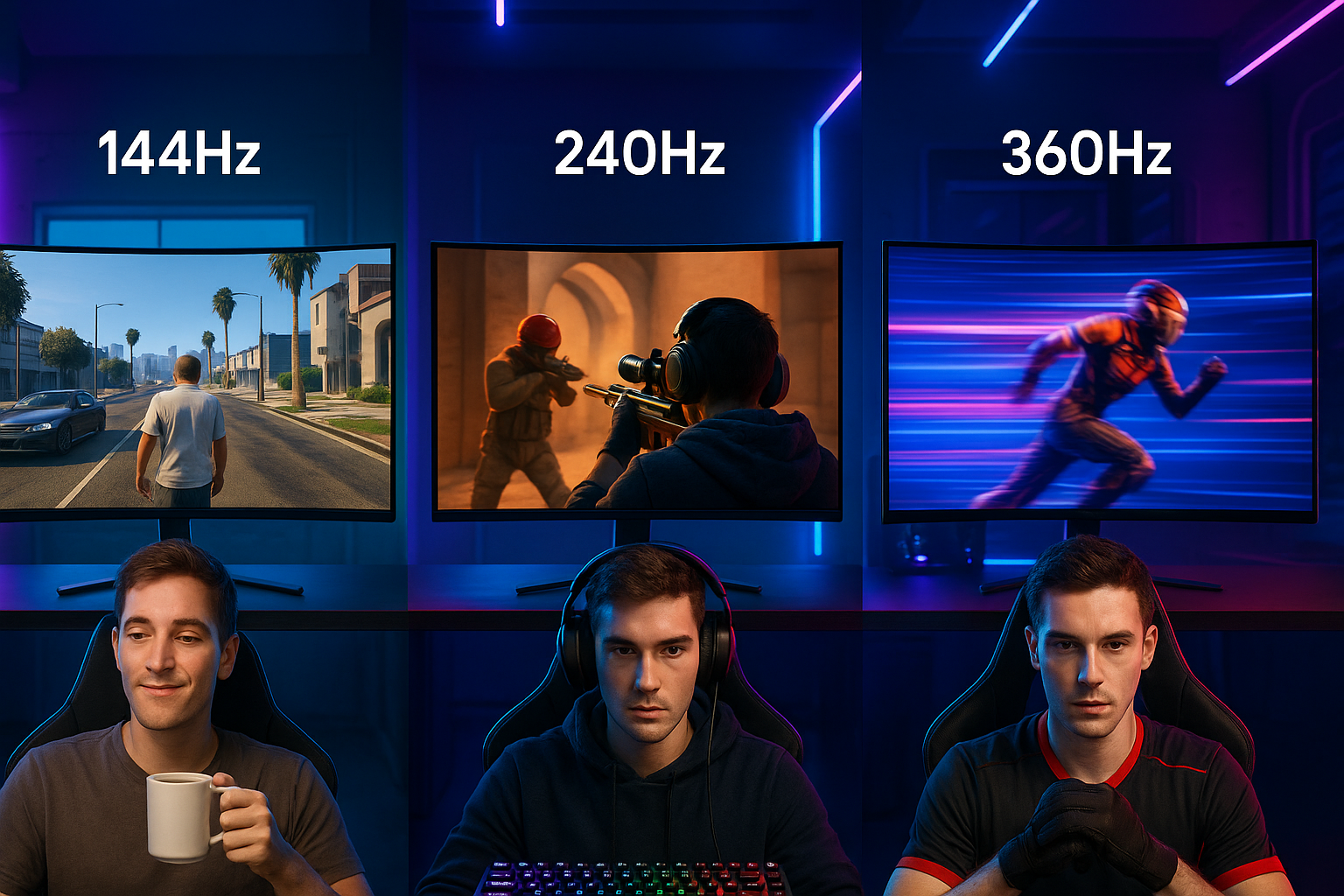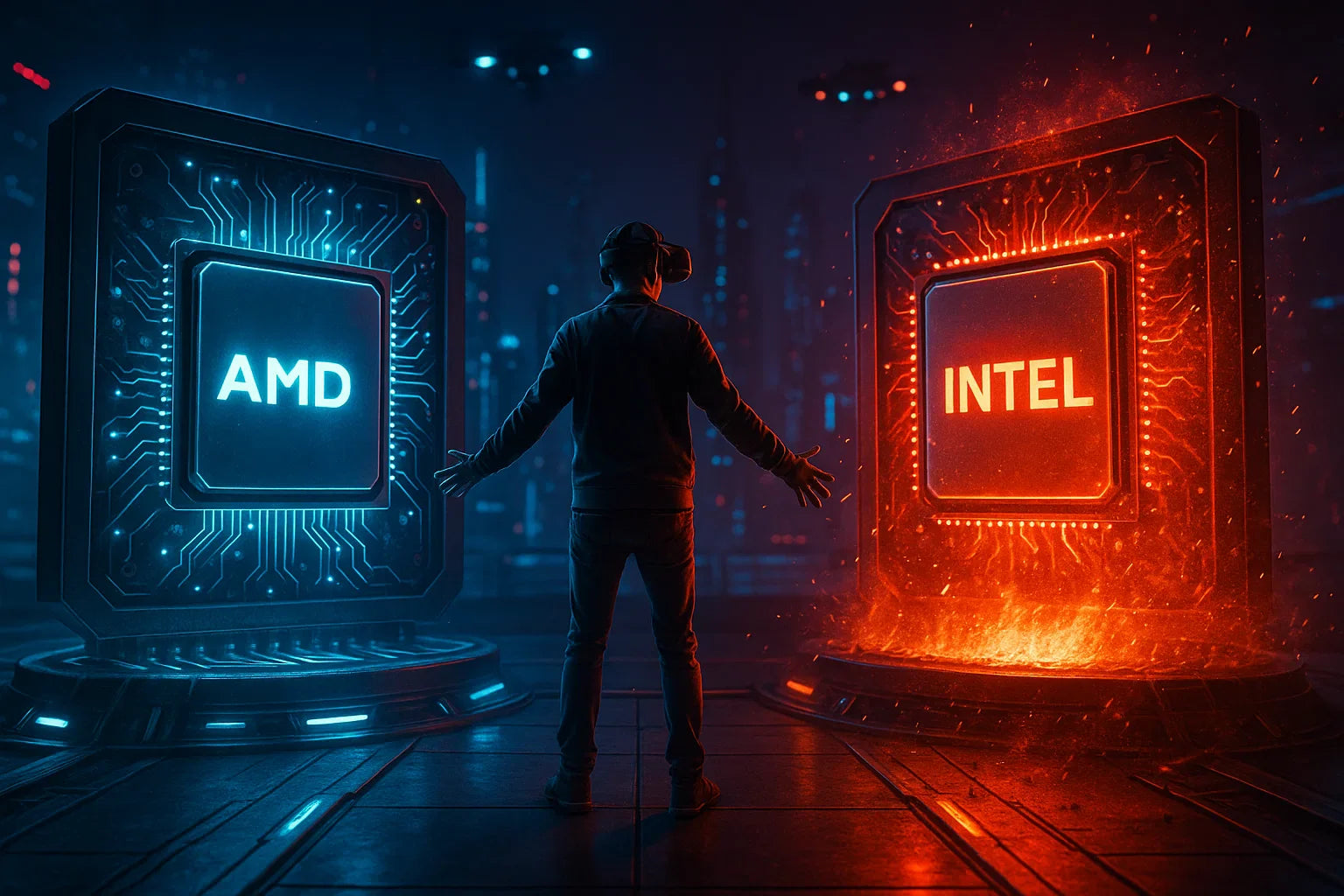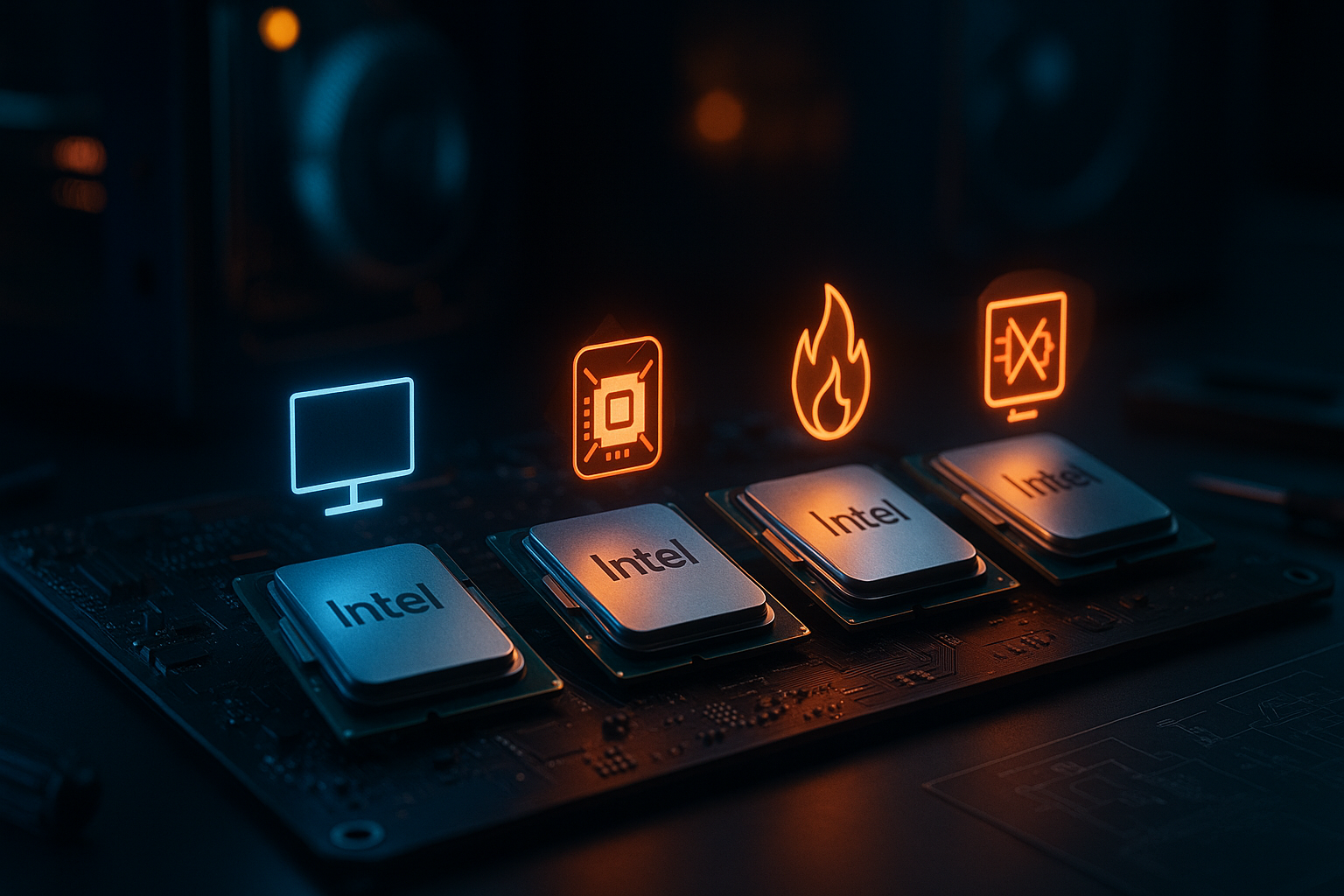If you’ve ever compared two gaming monitors side by side and one just felt faster — that’s probably the refresh rate doing its magic. Whether you're a casual gamer or an aspiring eSports pro, choosing the right refresh rate can make a real difference to your experience. But do you really need 360Hz, or is 144Hz still the sweet spot?
Let’s break it down.
🎯 What Is Refresh Rate, and Why Does It Matter?
Refresh rate is the number of times your monitor updates with new images each second, measured in Hertz (Hz).
-
144Hz = 144 frames per second
-
240Hz = 240 frames per second
-
360Hz = 360 frames per second
The higher the number, the smoother the motion on screen — especially important for fast-paced games like Valorant, CS2, Warzone, and Apex Legends.
🧠 Real Talk: Can You See the Difference?
Yes — but it depends on a few things:
| Refresh Rate | Experience | Best For |
|---|---|---|
| 144Hz | Big upgrade over 60Hz; smooth gameplay, great for all genres | Casual + Mid-level competitive gamers |
| 240Hz | Noticeably smoother in FPS games, especially if you consistently hit high frame rates | Hardcore FPS players, aspiring pros |
| 360Hz | Ultra-fluid, minimal input delay — but only noticeable in top-tier setups | Pro gamers, eSports athletes |
Fun fact: Some people think they can't tell the difference — until they switch back to 60Hz and suddenly everything feels choppy. Once you upgrade, there’s no going back.
🎮 What Kind of Gamer Are You?
Let’s make this fun. Choose your vibe:
✅ “I play games after work just to chill.”
144Hz is perfect. It’s affordable, future-proof for years, and will make even story games feel more immersive.
✅ “I’m trying to climb ranks in Valorant or CS2.”
240Hz is your sweet spot. Every millisecond counts when you’re peeking corners or flicking headshots.
✅ “I’m aiming to go pro. I have a rig that can push 360+ FPS.”
360Hz is built for you. This level eliminates every possible motion blur or input lag that could cost you a clutch round.
🧪 Monitor Refresh Rate ≠ Performance Alone
A higher refresh rate won’t magically make you a better player — but it can help you play better. You’ll:
-
React quicker
-
Track enemies more smoothly
-
Feel more connected to your inputs
But: If your PC can’t push the frame rates to match your monitor, the extra Hz won’t matter. No point getting a 240Hz monitor if you’re only getting 100 FPS in-game.
💸 Is It Worth the Money?
Here’s a realistic breakdown:
| Refresh Rate | Average Price (AED) | Ideal For |
|---|
| 144Hz | 500 – 900 | Budget gamers, students |
| 240Hz | 900 – 1,400 | Competitive FPS players |
| 360Hz | 1,500+ | High-end setups, eSports focus |
Pro Tip: If you’re low on budget, a 144Hz IPS monitor is a fantastic middle ground for both gaming and day-to-day use.
🛒 Final Verdict: What Should You Get?
| Your Style | Go For |
|---|
| Mixed use (office + gaming) | 144Hz IPS monitor |
| Casual but love smooth gameplay | 144Hz VA or IPS |
| Competitive FPS gamer | 240Hz |
| Pro-level or streamer | 360Hz |
🎁 Bonus Tip from Gamenzo
Don’t just chase specs — chase performance.
Pair your monitor with a capable GPU and a solid refresh rate-friendly setup. At Gamenzo.com, we’ve got everything from entry-level 144Hz displays to 360Hz beasts — and you can rent them monthly if you’re not ready to buy!
Try. Test. Game. Repeat. 🎮





![The Ultimate Budget-to-Beast Gaming PC Build Guide [2025 Edition]](http://www.gamenzo.com/cdn/shop/articles/20250524_1844_Desktop_Gaming_Setups_simple_compose_01jw1bzd5ge928337svtps8t6s.png?v=1748098237&width=1536)
Share:
The Ultimate Budget-to-Beast Gaming PC Build Guide [2025 Edition]